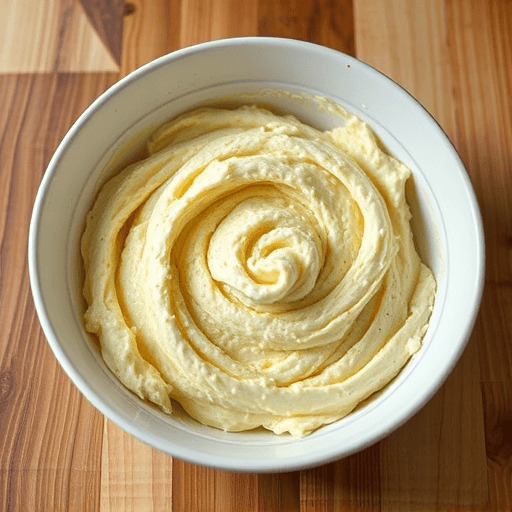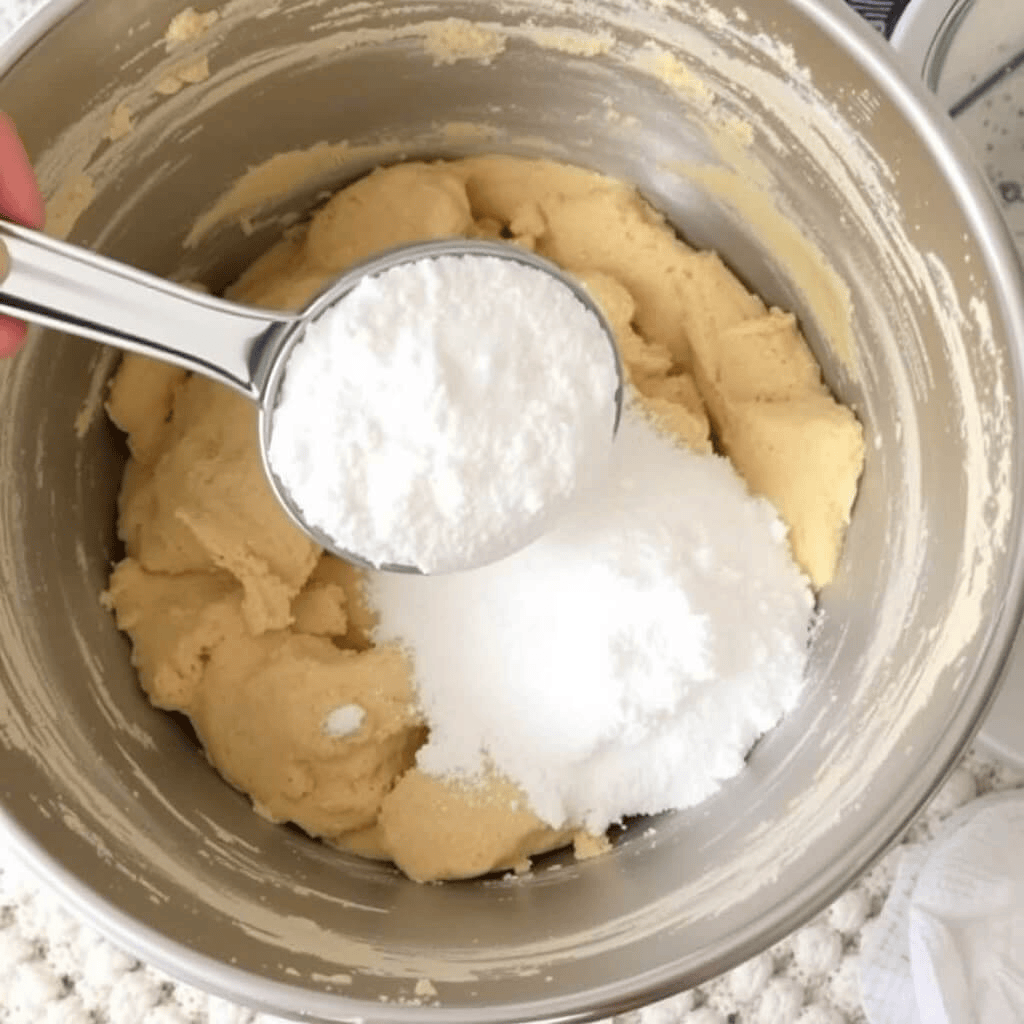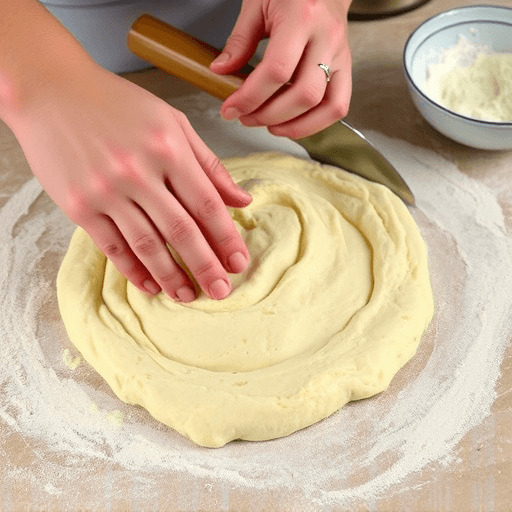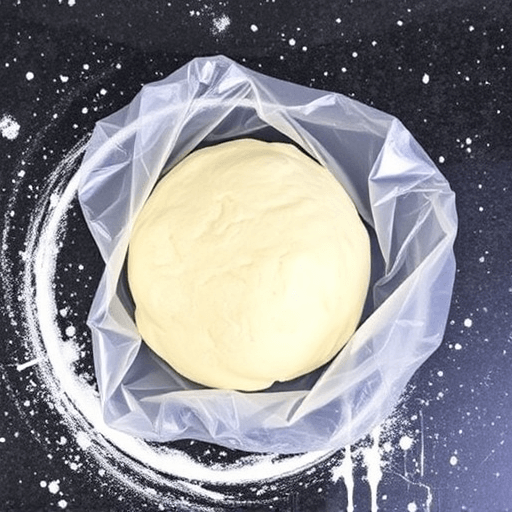Sweet pastry is the heart of many classic desserts — a tender, buttery canvas that elevates every filling it cradles. Whether it’s the delicate base of a fruit tart, the crumbly frame of a custard pie, or the flaky foundation of a refined tea-time treat, sweet pastry brings balance, texture, and quiet sophistication. Its charm lies not only in its taste but in the way it transforms under gentle heat — crisping at the edges, softening beneath creamy fillings, and always offering that unmistakable whisper of sweetness with each bite. More than a technical component, it’s a sensory experience: the aroma of butter as it bakes, the delicate snap when a fork breaks through, the golden hue that hints at patience and care. Sweet pastry may be humble in appearance, but it is nothing short of poetic in purpose — a silent star of the pâtisserie world, letting fruits, creams, and ganaches shine while always grounding them in comfort and craft.
Sweet Pastry is a delicately crumbly and sweet dough, typically used for tart bases filled with creams, fruits, or ganaches. It stands out for its smooth texture and sweet flavor, thanks to the addition of powdered sugar. Sweet pastry is perfect for tarts that need a sturdier crust, providing a pleasant contrast to creamy or fruity fillings.
Characteristics:
Texture: Tender and less crumbly than short Rust pastry, but still firm enough to hold its shape during baking.
Flavor: Mildly sweet, enriched by powdered sugar.
Uses: Ideal for tarts with fillings that require a well-structured base, such as chocolate tarts, fruit tarts, or custard-filled tarts.
Preparation:
Sweet pastry is made by creaming butter and powdered sugar together until smooth, then adding eggs and flour. It’s important not to overwork the dough to avoid making it elastic, which would make it difficult to roll out.
Typically, it is chilled before rolling to prevent shrinking during baking.
Sweet pastry gives a perfectly sweet, crisp base for elegant and refined pastry creations.
Sweet Tart Base (22 cm)
Serves: 6 people
Prep time: 15 minutes
Chill time: 2 hours
Storage: Up to 3 days in the refrigerator
Tools Needed
- Whisk
- Sieve
- Dough scraper
Ingredients
- 50 g unsalted butter
- 50 g icing sugar
- 30 g egg (about ½ egg)
- 0.5 to 1 g salt
- 125 g all-purpose flou
Instructions1:
Mix dry ingredients and butter: Sift the flour and powdered sugar into a large bowl. Add the butter, cut into small pieces, and work the mixture with your fingertips or a bench scraper until it forms a sandy texture.
- Add egg and salt: Add the egg and salt to the mixture. Stir until the dough comes together smoothly.
- Form the dough: Gather the dough into a ball, then flatten it slightly to form a disk.
- Chill the dough: Wrap the dough in plastic wrap and refrigerate it for at least 2 hours to make it easier to roll out and handle.
- Baking:
After chilling, roll the dough out with a rolling pin and place it into your tart pan. - Prick the bottom of the tart crust with a fork to prevent air bubbles.
- You may need to blind-bake the crust by covering it with parchment paper and adding baking beads for about 15-20 minutes at 180°C (350°F).
- Storage:
The dough can be kept in the refrigerator for up to 3 days.
Instructions2:
- Prepare the butter: In a mixing bowl, beat the butter until it’s soft and creamy (pomade texture)Whisk and combine: Use a whisk to mix everything together until the dough is smooth. Add the egg mixed with salt and continue to blend until smooth.Add powdered sugar: Sift the powdered sugar and add it to the dough, then mix until fully combined.

- Add flour: Sift the flour and add it to the butter mixture. Mix it well to incorporate.

- Fraser the dough: Using your hands or a bench scraper (corne), work the dough on the work surface until it forms a homogeneous paste.

- Wrap and chill: Wrap the dough in plastic wrap and refrigerate it for at least 2 hours before using.

Conclusion – The Foundation of Great Tart Making
Mastering sweet tart dough is less about complexity and more about care. Each step — from creaming the butter to chilling the dough — is a quiet act of precision that lays the groundwork for exceptional pastries. Whether you’re filling it with lemon curd, chocolate ganache, or fresh seasonal fruits, a well-made tart shell supports the filling both structurally and in flavor. It’s the elegant base of countless pâtisserie classics, where texture and technique shine. With patience, the right tools, and attention to detail, this simple dough becomes your gateway to endless dessert possibilities.
Q&A – Sweet Tart Dough Basics
Q: Why does the dough need to rest in the fridge before baking?
A: Resting the dough allows the gluten to relax and the butter to firm up. This helps prevent shrinking during baking and ensures a tender, flaky texture.
Q: Can I freeze the dough for later use?
A: Absolutely. Wrap it tightly in plastic wrap and freeze it for up to one month. Thaw overnight in the fridge before rolling.
Q: What’s the purpose of “frasage”?
A: Frasage helps evenly distribute the butter and flour without overworking the dough. It ensures a smooth, cohesive texture without developing too much gluten.
Q: My dough cracks when I roll it out. What went wrong?
A: It may be too cold or too dry. Let it sit at room temperature for a few minutes to soften, or lightly press it back together with your fingers as you roll.
Q: Do I need to blind-bake the tart shell?
A: Yes, if you’re using a no-bake filling or one that cooks quickly. Blind baking ensures the crust is fully cooked and crisp before adding the filling.http://Pâte Sucrée Techniques – King Arthur Baking https://briochechic.com/why-professional-bakers-never-share-these-5-viennoiserie-success-secrets/#more-229

